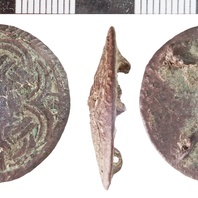
Viking Objects
Gilded Disc Brooch (NLM-783BCB)
This brooch is classed as Weetch Type 4 and resembles Viking-Age Terslev-style brooches. It is decorated with interlaced double strapwork and a cabled border and retains some traces of gilding. For more information on Scandinavian jewellery in England check out our blog: Brooches, Pendants and Pins: Scandinavian Dress Accessories in England.
Read More
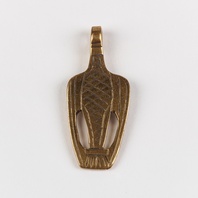
Viking Objects
Reproduction Bird Pendant
A reproduction bird pendant based on one found at Langford, Nottinghamshire. The nearest parallel to this type of brooch is one from Yaroslavl in Russia. The bird symbol, very similar to the one depicted on this pendant, was used by the Rurik dynasty which had started the conquest of Slavic lands in the mid 9th century and later formed the polity of Rus’. With some exceptions, pendants were generally worn by women as an accessory to Scandinavian dress.
Read More
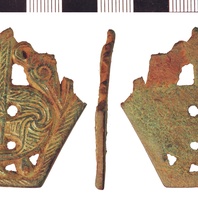
Viking Objects
Copper-Alloy Mount Fragment (NLM-92AFEC)
This copper-alloy mount fragment is likely from a horse harness and is decorated with closely-spaced diagonal hatching framing for a zoomorphic openwork design of four battling beasts around a central roundel. The front of the mount contains extensive traces of gilding. The object is considered an example of Irish or Hiberno-Norse metalwork and thus is associated with Viking activities around the Irish Sea region.
Read More
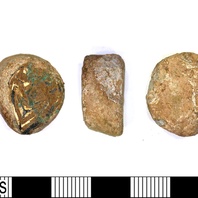
Viking Objects
Gilded Lead-Alloy Weight (LEIC-C6C96A)
The inset decoration of this weight is probably a reused fragment of an Irish or Anglo-Saxon object. Its importation and re-working is likely the result of Viking intervention. The distinction of weights by embedded objects or other embellishments in various media is a widely recognised feature of some early medieval weights. Weights are an important form of evidence for Viking Age commerce and the use of standards across the different economic systems within which Vikings were integrated. Many of the weights discovered, particularly ones in Ireland and those of Arabic type, suggest that a standardized system of weights existed in some areas. These standard weights, alongside standard values of silver, are what allowed the bullion economy of Viking-occupied areas to function. A bullion economy was a barter economy that relied on the exchange of set amounts of precious metal in various forms, such as arm-rings or coins, for tradeable goods, such as food or textiles. Each merchant would have brought their own set of weights and scales to a transaction to make sure that the trade was conducted fairly.
Read More
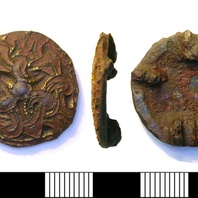
Viking Objects
Copper-Alloy, Gilded Disc Brooch (LEIC-E7A016)
A copper alloy, gilded brooch with a zoomorphic design in the Borre style. This brooch was probably made in Denmark and brought to England. For more information on Scandinavian jewellery in England check out our blog: Brooches, Pendants and Pins: Scandinavian Dress Accessories in England.
Read More
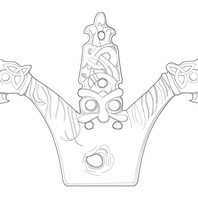
Viking Designs
Drawing of a Mystery Item
This is a drawing of a gilded, copper alloy object that was clearly affixed to something else. The gilding shows that it was high status but its function remains a mystery.
